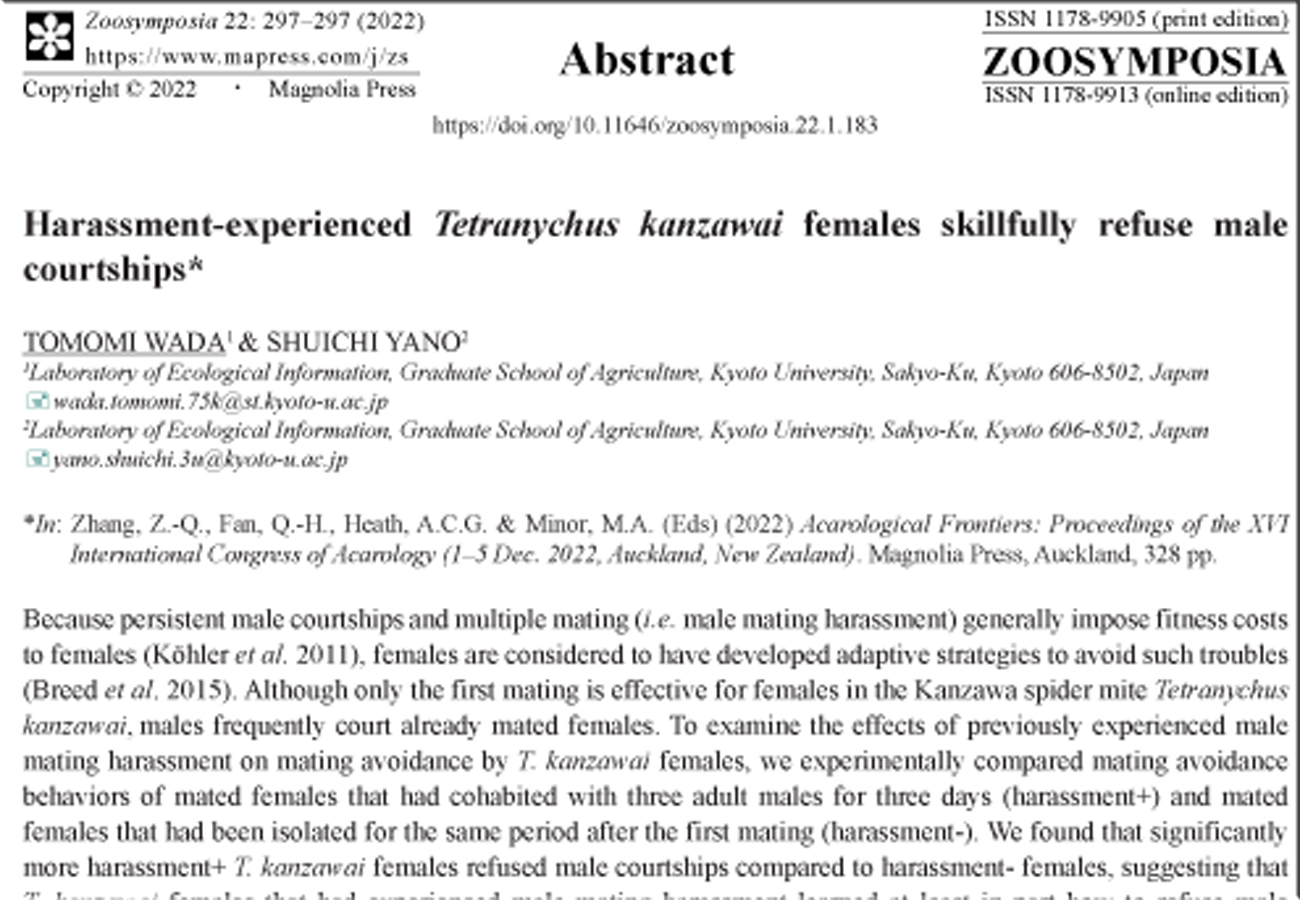Abstract
Because persistent male courtships and multiple mating (i.e. male mating harassment) generally impose fitness costs to females (Köhler et al. 2011), females are considered to have developed adaptive strategies to avoid such troubles (Breed et al. 2015). Although only the first mating is effective for females in the Kanzawa spider mite Tetranychus kanzawai, males frequently court already mated females. To examine the effects of previously experienced male mating harassment on mating avoidance by T. kanzawai females, we experimentally compared mating avoidance behaviors of mated females that had cohabited with three adult males for three days (harassment+) and mated females that had been isolated for the same period after the first mating (harassment-). We found that significantly more harassment+ T. kanzawai females refused male courtships compared to harassment- females, suggesting that T. kanzawai females that had experienced male mating harassment learned at least in part how to refuse male courtships. The mechanism by which harassment-experienced T. kanzawai females refuse male courtships will be discussed.
References
Köhler, A., Hildenbrand, P., Schleucher, E., Riesch, R., Rodriguez, L.A., Streit, B. & Plath, M. (2011) Effects of male sexual harassment on female time budgets, feeding behavior, and metabolic rates in a tropical livebearing fish (Poecilia mexicana). Behavioral Ecology Sociobiology, 65,1513–1523. https://doi.org/10.1007/s00265-011-1161-y
Breed, G.A., Severns, P.M. & Edwards, A.M. (2015) Apparent power-law distributions in animal movements can arise from intraspecific interactions. Journal of the Royal Society Interface,12, 20140927. https://doi.org/10.1098/rsif.2014.0927

